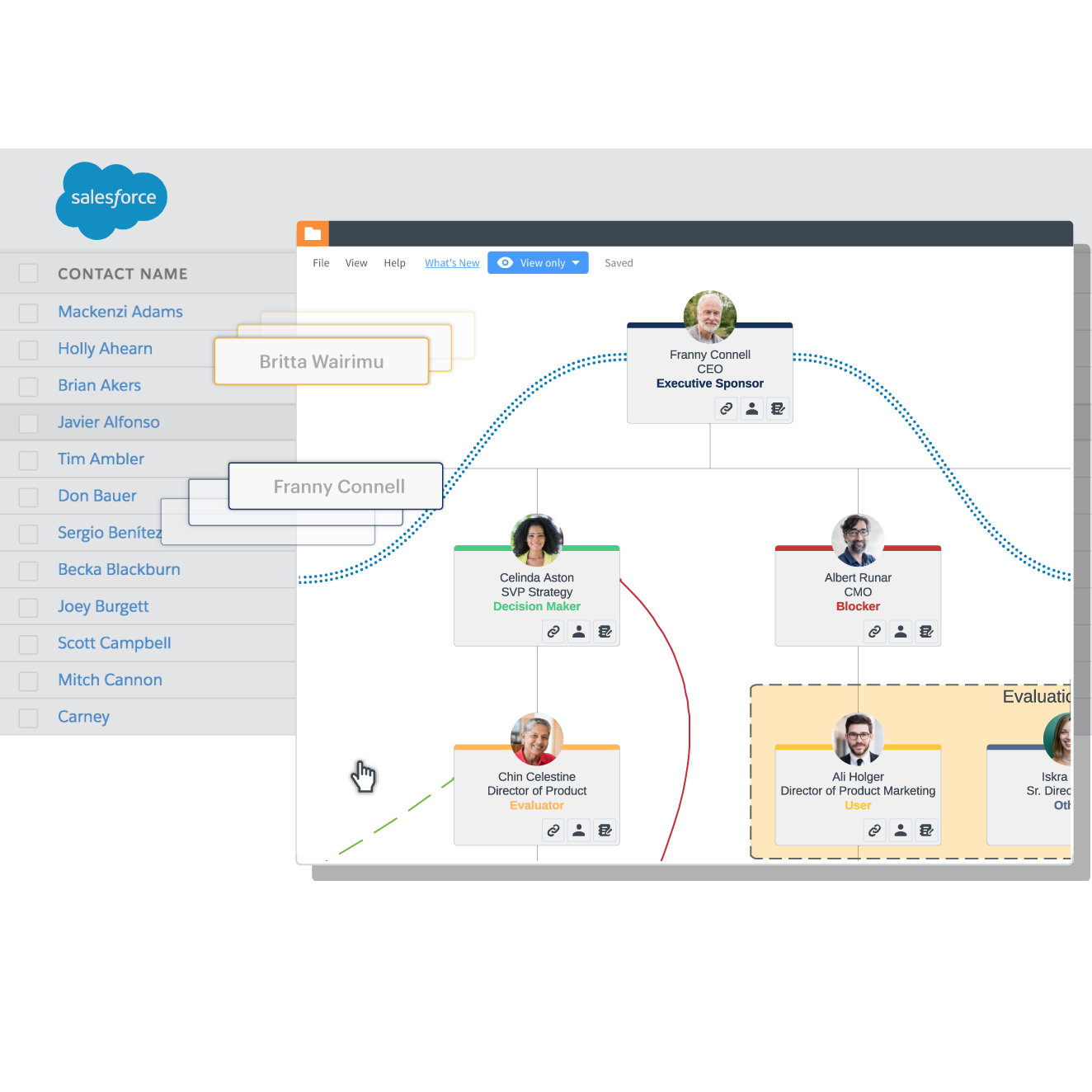
Perfecting the art of social selling: How to transform your B2B sales pipeline in 6 steps
Gabe Villamizar
Reading time: about 8 min
Topics:
Social selling is much more than a buzzword. It’s a practice that’s disrupting the way B2B sales are done. Period. If your business has a consistent presence on Facebook and Twitter, or if you maintain a highly active LinkedIn profile, you’re already familiar with the key social selling tools.
But don’t confuse social media selling with your social media marketing and advertising efforts. Selling on social media is an entirely different animal. Rather than selling a product or service, the art of social selling gives you the power to quickly identify which prospects are ready to buy, establish a rapport with them and their network, and shape a personalized sales approach.
Many dedicated social selling companies have been able to abandon the practice of cold calling altogether. In my experience, social selling tools can actually complement cold calling and other “offline” sales techniques. How you place social selling within your funnel is ultimately up to you.
Done consistently, social selling will transform your B2B sales pipeline. For example:
- Individual sales reps can improve their numbers through social selling. But when social selling is implemented by an entire sales organization, its impact becomes exponential.
- A recent “State of Sales” survey by LinkedIn suggests that 83% of top-performing social sellers are employed by companies with focused social selling programs in place.
- Win rates increase up to 120% with deal sizes growing up to 130% with social selling. As many as 71% of all sales reps (and 90% of top salespeople) use social selling tools.
Considering the social selling statistics above, it shouldn’t come as a big surprise to learn that you may be losing some business to the more socially savvy competitors within your industry.
But we can change that—starting with an explanation of what social selling is all about.
What is social selling?
Buyers engage with LinkedIn, Twitter, and other social media platforms on a daily basis. In doing so, those buyers constantly leave clues about who they are (and what they like) based on the content they share, the people they are following, and the comments they leave.
Social media platforms also offer up insights through job changes (those in new roles often make bold moves), social posts (which hint at top-of-mind questions), and hiring patterns (a sign of new investment) that qualify as CRM-suitable demographic data.
With social selling, sales reps utilize all these “digital breadcrumbs” to find, connect with, understand, and nurture sales prospects. By building a rapport early on with potential customers, you become the first person or brand they think of when it’s time to buy.
Now, let’s move forward so I can show you my 6-step social selling framework:
1. Social selling intro
Before you can incorporate social selling examples into your B2B sales repertoire, your team must understand the when, what, and why of social selling, as well as how to make it work.
Make a list of social selling is and what it’s not. This will help others in your sales organization to avoid the tendency for being overzealous and unintentionally “social spamming” your prospects.
Keep in mind, social selling takes time. From my experience in training and coaching hundreds of sales professionals, it takes two to three months of intense, disciplined effort (on average) to realize measurable success. Plus, don’t expect social selling to replace your traditional sales process.
Social selling is meant to build upon your cold calling and other efforts as a sales professional. Many of your B2B sales may start online but still plan to go offline to close your biggest deals.
2. Profile optimization
Prospects do business with people whom they like, know, or trust. By optimizing your social media networks (specifically Twitter and LinkedIn) with the right keywords and credibility triggers, both your online and offline reputations will skyrocket with potential B2B buyers.
A good place to start is by opening a new incognito window and searching your first and last name. If your social media profiles aren’t ranking on the first page, then there’s obvious room for improvement. Even if your name is a common one, optimization is achievable.
Next, determine the 10-15 keywords you want to rank for that will speak to your buyers, are in tune with your company, gain attention in your market, and further your credibility.
Lastly, make sure your social profiles are 100% complete to rank higher with search engines. Your profile can appear as incomplete because small details like “address” or “work experience” are omitted.
Check out my full article on how you can better optimize your LinkedIn profile.
3. Social listening
By using the right tools, apps, and networks, you can learn everything possible about your buyers. Every time they’re online, your sales prospects share fresh insights into their personal and professional lives. Using this data adds value to your interactions; earning their respect.
Why is earning the respect of your buyers important? Respect = Trust. When doing your social listening and conducting research, try to consider the following four questions:
- Does this individual have buying power?
- From a professional standpoint, what does my buyer care about?
- What problem(s) does my product/service solve specifically for my buyer?
- What's the fastest way I can earn my buyer's trust?
Social listening is like muscle training. It takes time and dedication, but the results are worth it. And the more you do it, the better you will get.
Not sure where to begin with using LinkedIn Sales Navigator for research and prospecting?
Read our tips4. Social engagement
By this point, you've optimized your relevant social media profiles, you've located new prospects on social media, and you’ve "listened" to your buyers online. With this solid social foundation in place, you're now ready to build relationships of trust on the right channel with the right content.
Many sales reps skip the above steps and jump to the engagement stage. This is a big mistake.
If you’ve listened to your buyers correctly, it’s more than likely you've identified their preferred style and channel of communication. If you discover that your buyer is barely active on LinkedIn and Twitter (or doesn’t have an account), you can stop your social selling activities/outreach for that specific buyer in favor of the traditional sales route, including email, voicemail, etc.
If your buyers are active on social media, these are a few tactics to help you engage with them:
- If you’re not yet connected with your buyer on LinkedIn, you can still follow them. You can locate the Follow dropdown button in their LinkedIn profile next to the Connect box.
- Navigate the Recent Activity section of your buyer’s LinkedIn profile. There you can like, comment, or share an update. And be sure to share your latest posts with your network.
- Retweet select tweets that mention your buyer and/or their company. You should also follow your buyer’s Twitter handle. For bonus points, follow your buyer’s company, too.
- Add your buyer(s) to a public Twitter list and name that list something clever or creative, like “Sales Thought Leaders.” Reply to your buyer’s tweet by asking something relevant.
Actively engaging with buyers on LinkedIn and Twitter will increase your visibility and credibility. In turn, this allows you to move your deal forward without continuously contacting them directly.
5. Social commitment
After establishing a relationship of trust with social selling, aim to take the conversation offline.
Avoid the trap of remaining in the social selling “friend zone” for too long. This is where social commitment comes into play. You must consistently and quickly assess if the deal is moving forward or if it’s time to move forward and/or focus your efforts on another buyer. Sometimes, these decisions will be hard to make and will take continual practice until you get it right.
Of course, if your buyer is ready to move forward, you can continue the conversation offline with a follow-up call, email, voicemail, or text. The main takeaway is to begin online, then end offline.
6. Tracking and KPIs
If you’re not measuring the ROI of your organization’s social selling, then you can’t manage it. That’s why it’s critical to establish a set of social selling KPIs in your CRM to measure success.
Easily track and analyze the social media activities of your sales reps within Salesforce (my CRM of choice for measuring the ROI of social selling). By doing so, you will soon have the means to create sustainable and predictable social selling cadence. For example, one of our Lucidchart sales managers found out that his team took 21 touches to set up an enterprise appointment with 13 to 15 being attributed to social selling. This average now provides a guideline for the number of social selling touches necessary to close similar deals.
In social selling, get accustomed to learning, testing, and executing new strategies and tactics.
Social selling is about making your prospect’s life easier. Remember not to don’t overdo it by bombarding people with private messages. And only “like” or “retweet” posts you actually like.
Hope you feel inspired by these social selling tips as you crush this year’s sales goals.

See more, know more, sell more. Integrate your sales tools with Lucidchart for more personalized outreach.
Learn moreAbout the author

Gabe Villamizar is the Global Evangelist at Lucidchart. He is recognized as a leading social selling and social media practitioner by LinkedIn, Forbes, Forrester, and Salesforce. Gabe's social selling online courses were recently published on Lynda.com and LinkedIn Learning and have been viewed by 70,000+ sales and marketing professionals worldwide. Whenever Gabe isn't tweeting (@gabevillamizar), he's most likely grilling some bomb carne asada tacos in his Traeger Grill. Follow Gabe on Twitter, Instagram, and LinkedIn.
About Lucidchart
Lucidchart, a cloud-based intelligent diagramming application, is a core component of Lucid Software's Visual Collaboration Suite. This intuitive, cloud-based solution empowers teams to collaborate in real-time to build flowcharts, mockups, UML diagrams, customer journey maps, and more. Lucidchart propels teams forward to build the future faster. Lucid is proud to serve top businesses around the world, including customers such as Google, GE, and NBC Universal, and 99% of the Fortune 500. Lucid partners with industry leaders, including Google, Atlassian, and Microsoft. Since its founding, Lucid has received numerous awards for its products, business, and workplace culture. For more information, visit lucidchart.com.
